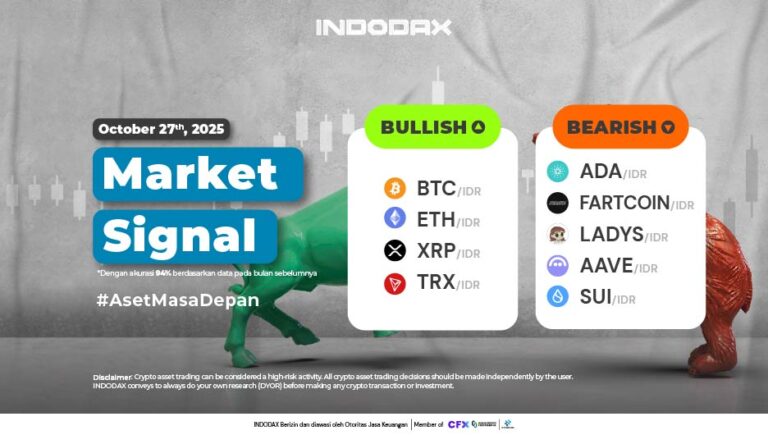Eli Lilly and Co. (LLY) is a leading global pharmaceutical company focused on developing innovative medicines in the areas of diabetes, cancer, immunology, and neuropsychiatry.
Eli Lilly stock is attractive to investors due to its strong track record of growth, commitment to research and development (R&D), and global market dominance.
Despite competition and regulatory challenges, the company has great potential thanks to its broad and innovative drug portfolio, making it an attractive choice in the pharmaceutical sector and a long-term investment.
Getting to Know Eli Lilly: History and Business Focus

Eli Lilly and Company (LLY) was founded in 1876 in Indianapolis, Indiana, USA, by Eli Lilly, a colonel in the US Civil War.
From the beginning, the company has focused on pharmaceutical innovation, with a strong commitment to developing medicines that could make a major impact on global health.
One of Eli Lilly’s greatest achievements was being the first to mass-produce insulin in 1923, which has saved millions of lives worldwide.
This innovation illustrates the company’s dedication to creating sustainable health solutions through rigorous scientific research.
Eli Lilly’s leading products include medicines in areas such as diabetes, cancer, immunology, and neuropsychiatry.
For example, Humalog insulin and the cancer drug Alimta have been key parts of their portfolio, contributing significantly to advances in medicine.
Eli Lilly’s role in the development of cutting-edge medicines continues, with a focus on research and development to create innovative therapies that can address evolving global health challenges.
With a presence in more than 125 countries, the company remains a major player in the global pharmaceutical industry.
Also Read: These are the 5 American Stocks with the Biggest Dividends, a Must Check!
LLY Stock Performance in the Market
Eli Lilly (LLY) stock has shown solid performance in the market with a positive trend in the past year. With a large market capitalization and strong fundamentals, this stock has attracted investors’ attention.
The following are details about the current price, historical performance, and key financial indicators that describe the performance of Eli Lilly stock.
Current Price & Historical Performance
Quoting the id.investing.com page, the current price of Eli Lilly (LLY) stock is at $823.23, with an increase of +19.15 (+2.38%) at the last market close. In the after-hours session, the price increased slightly to $823.25.
In the daily range, the stock price moved between $805.00 and $824.62. Meanwhile, in the 52-week range, this stock has reached a low of $659.74 and a high of $972.53.
In the past year, Eli Lilly shares have increased by 27.51%, indicating a positive trend despite price fluctuations.
Market Capitalization and Key Fundamentals
Quoting the id.investing.com page, Eli Lilly is known to have a market capitalization of $740,970,000,000, with 900,430,000 shares outstanding.
In terms of financial performance, the company recorded annual revenue of $40,860,000,000 and a net profit of $8,370,000,000. The company’s EPS (Earnings Per Share) was recorded at $9.29, reflecting solid profit performance.
The P/E (Price-to-Earnings) ratio of 88.43 indicates that this stock is traded at a relatively high valuation level, reflecting market expectations for the company’s future growth.
The company also has a book value per share of $15.81, and a high gross profit margin of 80.9%, indicating strong operational efficiency.
A return on equity of 65.7% and a return on assets of 12.5% ??indicate solid financial performance, adding to the appeal for investors.
In addition, Eli Lilly’s dividend is recorded at $6.00 per share, with a dividend yield of 0.73%, and the company has increased the dividend for 10 consecutive years.
With a projected target price of $974.93, there is a potential upside of 18.43% from the current stock price, indicating analysts’ optimism about Eli Lilly’s long-term prospects.
Also Read: Top 10 Fastest Growing American Technology Companies!
Factors that Influence LLY Share Price Movements

Eli Lilly’s stock price movements are influenced by a variety of factors, from product success to global macroeconomic conditions. Here are some of the main factors that influence the company’s stock price.
1. Product Success and Regulatory Approvals
New products that receive regulatory approval from regulatory bodies such as the FDA or EMA can boost investor confidence and drive stock prices higher.
Successful development of an innovative new drug, particularly in a much-needed therapeutic area, such as cancer or diabetes, can significantly boost Eli Lilly’s stock valuation.
Any progress in the approval process or the launch of a new drug has a major impact on the market’s perception of the company’s prospects.
2. Financial Performance and Earnings Reports
A company’s quarterly report, which shows revenue performance, net income, and future projections, greatly influences stock price movements.
Strong financial performance, with continued revenue growth, can strengthen positive market sentiment, while disappointing reports can cause stock prices to decline.
Future earnings and revenue projections are also important factors in determining stock valuations in the market.
3. Pharmaceutical Market Trends and Global Competition
Changes in global health trends, such as an increase in chronic disease cases or shifts in healthcare needs, can affect demand for pharmaceutical products.
On the other hand, increasing global competition, whether from other large pharmaceutical companies or generic drug manufacturers, can squeeze profit margins and affect Eli Lilly’s stock price.
However, new opportunities in emerging markets or in less explored therapies can also be growth drivers for stocks.
4. Macroeconomic Factors and Government Policies
Government policies, such as changes in pharmaceutical industry regulations, can affect the stock prices of pharmaceutical companies.
For example, policies that make it easier or tighter to approve new drugs, or changes in drug prices that can be set by the government, can have a direct impact on Eli Lilly’s profitability.
In addition, macroeconomic factors such as interest rates, inflation, and economic policies that affect the healthcare sector also play an important role in the movement of Eli Lilly’s stock price in the market.
Also Read: Investing in American Oil Stocks: Tips and Tricks
Technical Analysis of LLY Stock
The following is the latest technical analysis for Eli Lilly (LLY) stock, which includes technical indicators, support and resistance levels, and market sentiment.
1. Summary of Technical Indicators
Quoting the id.investing.com page, Eli Lilly (LLY) shares show very positive indications based on technical analysis. With the current price of $823.23, which is up +19.15 (+2.38%), the stock price is in a strong trend.
The RSI (Relative Strength Index) indicator is at 57.06, which indicates that market conditions are not too overbought or oversold, signaling the potential for further increases.
The moving average analysis also shows a bullish trend with prices approaching the nearest resistance point.
2. Current Support and Resistance Levels
Based on the latest data, the nearest support level is at $805.00, while resistance is at $824.62, which is the upper limit of the price in the daily range.
In the long term, the stock price has moved in a 52-week range between $659.74 and $972.53, with the potential to retest the highest resistance if the positive trend continues.
3. Market Sentiment & Analyst Forecast
Market sentiment towards Eli Lilly stock is very positive, with technical indicators showing a “Strong Buy” signal. Analysts also show optimistic sentiment, with a target price of $974.93, giving a potential upswing of 18.43% from the current price.
This reflects good market expectations towards the company’s performance in the short to medium term.
Also Read: Top 10 Sharia Stocks in the US: Best Halal Investment Options
Future Outlook: Is LLY Still a Buy?
Below is an analysis of the future outlook for Eli Lilly (LLY) stock, including growth potential, expansion opportunities, and risks for long-term investors.
1. Company Growth Potential Based on New Product Pipeline
Eli Lilly has a promising product pipeline, with several new drugs in development, including innovative therapies in the areas of cancer, diabetes, and immunology.
Success in gaining approval for new drugs can drive long-term revenue growth.
For example, drugs in clinical trials that can address a large global medical need have the potential to significantly increase stock valuations.
2. Potential Acquisitions, Business Expansion, and New Innovations
Eli Lilly continues to explore strategic acquisition opportunities to expand its product portfolio and enter new markets. Acquiring a biotechnology company that has innovative technology or therapies can accelerate long-term growth.
In addition, innovation in drug development and business expansion strategies, whether through international markets or new product development, provide great potential for the company to maintain its leading position in the global pharmaceutical industry.
3. Risk and Reward Analysis for Long-Term Investors
For long-term investors, Eli Lilly stock offers an attractive prospect with growth potential driven by product pipeline and expansion strategy.
However, there are several risks to consider, including dependence on government regulation, intense competition in the pharmaceutical sector, and stock price volatility that can be affected by clinical trial results or financial reports.
However, with strong fundamentals and optimistic growth projections, Eli Lilly stock is still considered worthy of a long-term portfolio, with risks commensurate with potential returns.
Conclusion
So, that was an interesting discussion about Eli Lilly and Company (LLY) Stock: Champion in the Pharmaceutical Sector? which you can read in full at the Crypto Academy at INDODAX Academy. Not only does it increase your insight into investment, here you can also find the latest crypto news about the crypto world.
In addition, find the latest information about the most complete collection of crypto articles from Indodax Academy. Don’t miss the opportunity to expand your knowledge in the world of investment and digital technology!
In conclusion, Eli Lilly (LLY) is a leading pharmaceutical company with a strong track record of innovation, leading products in the global market, and a promising product pipeline.
This stock has shown solid performance in the market with stable growth, supported by strong fundamentals and positive prospects going forward.
With projected revenue growth and business expansion, as well as the potential for new product innovations, Eli Lilly stock is still worth considering as a long-term investment option.
For investors looking for companies with growth potential in the healthcare sector, Eli Lilly stock offers manageable risk with attractive returns.
However, investors should still pay attention to the dynamics of the pharmaceutical market and external factors that can affect stock prices.
Ultimately, Eli Lilly stock can be a good addition to a long-term investment portfolio, with the note that attention to its risks is still needed.
As the latest information, INDODAX will soon introduce a new feature that allows its users to invest in stocks listed on the United States stock exchange.
With this feature, users can expand their investment portfolio with more than 50 stocks from the US market, in addition to the crypto assets that are already available. All of these investments can be easily managed through one account on the INDODAX platform.
FAQ
1. What makes this stock attractive for investment?
This stock has a stable track record and continues to grow through innovation in the pharmaceutical industry.
2. Is LLY stock suitable for long-term investment?
Based on financial fundamentals and product pipelines, this stock has strong prospects.
3.What factors affect LLY stock prices?
New product approvals, financial performance, government regulations, and pharmaceutical industry trends.
4.How to analyze LLY stocks technically?
By using moving average indicators, oscillators, and looking at price trends over a certain period of time.





 Polkadot 10.18%
Polkadot 10.18%
 BNB 1.12%
BNB 1.12%
 Solana 4.87%
Solana 4.87%
 Ethereum 2.37%
Ethereum 2.37%
 Cardano 1.68%
Cardano 1.68%
 Polygon Ecosystem Token 2.07%
Polygon Ecosystem Token 2.07%
 Tron 2.89%
Tron 2.89%
 Market
Market


